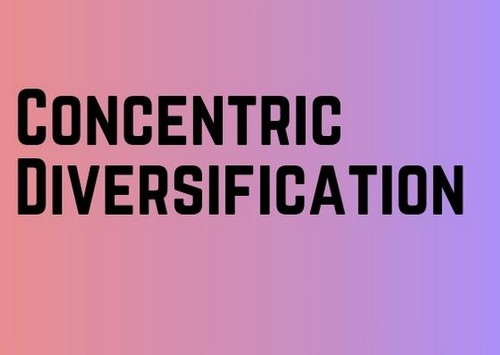Before understanding Horizontal Diversification, you should know what diversification is? Diversification is a corporate strategy that is used to bring new products into existing market or enter into a new market or industry where the business does not currently operate while there are new emerging products in the new market.
This is the riskiest section as the business will have no experience in the new market and do not know if the product will be successful or not.
Diversification strategies include internal development of new products or markets, having an alliance with a complementary company, acquisition of a firm, and distributing or importing product line that is manufactured by another firm. A combination of these options best does the final strategy.
This combination is got in the function of the existing opportunities and consistency with the objectives and the various available resources of the company. Apart from achieving higher profitability, there are many reasons for a company to diversify.
Why do companies diversify?
- Diversification eases risk when there is an industry downturn
- Diversification allows more variety and options of producers. When it is done correctly, diversification will provide a wonderful boost to brand image and the profit of the company
- Diversification can be used as a defense. By expanding its product or services, the company can safeguard itself from competitors
- Diversification also allows a company to make use of excess cash flows
There are three types of diversification – Concentric, Horizontal, and Conglomerate.
Through this article, let us discuss the Horizontal Diversification.
Horizontal diversification includes providing new and unrelated products or services to an existing consumer. It also means adding products or services to the product or service line already existing. After adding, the existing marketing, technical, and financial expertise is also applied to the new products.
For example, when a notebook manufacturer starts to manufacture pencils and when they enter pencil manufacturing, then this is a horizontal diversification strategy.
Horizontal diversification can be seen in the following two forms – Concentric diversification and Conglomerate diversification.
Table of Contents
Concentric Diversification
Concentric Diversification is a form of horizontal diversification where the companies perform the following:
- Add new products to the existing products in similar markets that will serve similar customers through the same distribution system. This is called the market related to concentric diversification. For example, when a company that sells good products expands to start selling kitchenware, it will supply to the same customers in the same markets.
- Add new products to the existing products by using similar technology. This is called as technology-related concentric diversification. When a company sells television, adds washing machine and music systems, this scenario is called as technology-related concentric diversification. Even though this is market-related diversification, it is also market-related diversification as the same consumers may buy these products.
Thus, in any of the ways, adding new products, either markets or technology to the existing products is known as concentric diversification.
Reasons for concentric diversification:
Concentric diversification is preferred by companies due to the reasons cited below:
- When there is a decline in sales for one product, it can balance by rising sales in the other product. There will be a reduction in cyclical fluctuations
- This diversification increases the cash flows and profits
- This diversification sees an increase in managerial expertise and efficiency and the companies tries to expand and enter new areas of business
- This diversification makes use of surpluses into the new market. Where there are profits that cannot be reinvested into the same business, it can be invested in products that can provide better returns
Conglomerate Diversification
Concentric diversification is a related approach to diversification, whereas conglomerate diversification is an unrelated approach. It basically means to add dissimilar products or services to the current products.
Conglomerate diversification is diversification into new products, technologies, markets, or new market functions that do not relate to the existing business.
For example, Tata industries have shadowed conglomerate diversification by diversifying itself into many unrelated areas like iron, automobiles, telecommunication, consumables, and steel.
Reasons for Conglomerate diversification:
- For the company to grow at a rate faster than what it can achieve through aggregation or expansion
- Conglomerate diversification also means to enter into international markets
- This diversification increases the managerial expertise
- This diversification could also mean to take benefit of well-experienced and senior executives who can get into new profitable projects
- This diversification also helps to optimize the use of existing resources
- It could also help to earn capacity and market value in the firm
Advantages and Disadvantages of Horizontal Diversification
Undertaking horizontal diversification, the market tends to focus on wide applicability and good demand. However, the risk of fluctuating demand is basically less, but the risk that is involved in competition within the industry is usually high.
Advantages:
Cost Reduction – Having a standard offering will normally allow a company to operate at a large scale. The operational process will be scalable, and this explains the lower cost of per unit production.
Aside from the production scale advantage, the standardized products also enjoy the benefit of being automated easily that results in further cost savings.
Quality Improvement – As a company has standardized offering, it specializes in a single product or service, quality techniques are applied to the offering. It becomes easier for the company to identify various areas where they could improve the product or services.
Since the product or services tend to get into the maturity stage, it has merged feedback from various channels from many channels from various domains. Thus, creating products that have wider applicability as it can integrate well with the businesses.
Optimized Operations – When there is a standard product, it usually indicates that the complexities are minimized. There will not be any customization that suits the needs of the various market segments that will result in cost-effective operations. Hence horizontal diversification can help to support various optimization by expanding its products to fit in the market.
Increased Manpower – When the product or services is increased or standardized, the whole organization will have periodic responsibilities and can become experts in their own domain.
Every stage, right from procurement to production process, sales, delivery is a repetitive process, and due to this, the entire operation is easily scalable. A workforce leaves more scope for innovation and usually results in great productivity levels.
Low Barging for Customers – When a company caters to a wide customer base, they tend to enjoy high levels of price control. Comparing to the average spending of each customer, the customers will not be a hindrance to the pricing decisions of the company.
Disadvantages:
External Force Risk – When there is a horizontal diversification, any kind of regulatory changes will affect the offering and will also tend to have an impact on the company’s future.
Apart from any technological changes that limit the application of the offering in the target verticals are indeed a potential threat to the top line. However, the success or failure of a single product determines the destiny of the entire company.
Customer Loyalty – When the company tends to make a horizontal diversification, there might be a situation where they tend to lose customers due to various reasons.
Conclusion
A horizontal diversification must be well thought before a company steps into it. It can increase the growth of the company that leads to wealth maximization. But sometimes, it could also be a failure for certain companies.
Before a company goes into horizontal diversification, the company must have a thorough analysis of it to ensure that it remains a success.
Liked this post? Check out the complete series on Strategy


Isn’t the whole idea of diversification to serve new markets with new products? Then how come the article says horizontal diversification is about intrinsically new and product line modifications that serve the EXISTING customer. The concept of market / customer seems to have changed from the higher level horizontal to the lover level of concentric and conglomerate
No. The purpose of diversification is to cater to existing as well as new markets.
For example – Why does Samsung bring out Note 10 besides Galaxy 10 and also Galaxy Edge smartphones. Arent all these 3 diversifications of the same smartphone. And arent all of them selling in the same market.
So with the above example, we can safely say that Diversification isnt about serving new markets with new products only. It is about serving new products or new variants of existing products to existing and new markets.
Thanks for your reply Mr Bhasin…
two clarifications arise from the above (please oblige)
(i) Would you not say that the Samsung example above is one of product development (referring to the classic Ansoff grid) and is more of an internal intensification strategy rather than a true diversification one?
(ii) Does not concentric and conglomerate diversification create new markets by virtue of possessing or not possessing synergies and competency transference potential respectively?
Going by what you mention everything beyond Market penetration would then be categorized as a diversification whether product based, market (geographic or segment) based or both!